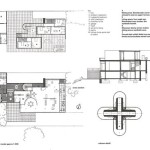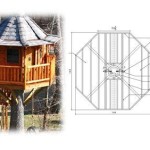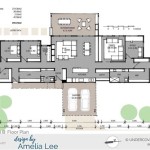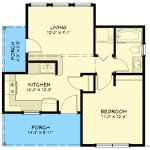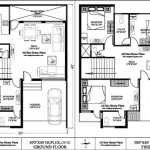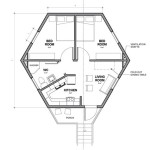Traditional Craftsman Style House Plans: Timeless Design and Functional Living
The Craftsman style house, a beloved architectural movement originating in the late 19th and early 20th centuries, continues to resonate with homeowners today. Its emphasis on natural materials, handcrafted details, and functional design appeals to those seeking a home that is both aesthetically pleasing and practical. Traditional Craftsman style house plans are distinguished by their respect for these core principles, offering a blueprint for building homes that embody the spirit of simplicity, durability, and connection to nature.
Craftsman architecture emerged as a reaction against the ornate and mass-produced styles of the Victorian era. Proponents of the Craftsman movement sought to revive the values of quality craftsmanship and honest design. This translated into homes characterized by low-pitched gable roofs, wide overhanging eaves, exposed rafters, and welcoming front porches. Interior spaces often featured built-in cabinetry, fireplaces with handcrafted surrounds, and open floor plans that encouraged a sense of togetherness.
Choosing a traditional Craftsman style house plan involves more than simply selecting an aesthetically pleasing design. It requires a thorough understanding of the key characteristics that define the style and how those characteristics can be incorporated into a floor plan that meets the specific needs of the homeowner. Careful consideration should be given to factors such as site orientation, material selection, spatial arrangement, and the integration of indoor and outdoor living spaces.
Key Features of Traditional Craftsman Style House Plans
Several defining features are consistently found in traditional Craftsman style house plans. These elements contribute to the overall aesthetic and functionality of the home, creating a space that is both beautiful and comfortable.
Emphasis on Natural Materials: Craftsman homes prioritize the use of natural materials such as wood, stone, and brick. These materials are often left exposed or minimally treated to showcase their inherent beauty. Wood is commonly used for siding, trim, and interior detailing, while stone and brick are used for foundations, chimneys, and exterior accents. The selection of these materials directly impacts the overall character and durability of the home. Utilizing regional resources can not only enhance the authenticity of the design but also contribute to its sustainability.
Low-Pitched Gable Roofs and Wide Overhanging Eaves: The roof is a dominant feature of the Craftsman style. Low-pitched gable roofs with wide overhanging eaves provide shelter from the elements and contribute to the home's horizontal emphasis. The overhanging eaves also help to protect the siding from rain and sun damage, extending the life of the exterior. Exposed rafter tails, often left unpainted or stained to highlight the wood grain, add a touch of handcrafted detail. Roof materials typically include asphalt shingles, wood shingles, or clay tiles, depending on the regional context and the homeowner's preference.
Welcoming Front Porches: The front porch is an integral part of the Craftsman home, serving as a transition space between the interior and exterior. Large, covered porches create a welcoming entry and provide a space for relaxation and socialization. Porch columns, often made of wood or stone, are typically substantial and visually appealing. Railings are often simple and understated, allowing the focus to remain on the surrounding landscape. The porch is designed to be an inviting extension of the living space, promoting a sense of community and connection to the neighborhood.
Considerations When Selecting a Craftsman Style House Plan
The selection of a Craftsman style house plan requires careful consideration of various factors to ensure that the final product meets the owner’s expectations and aligns with the principles of the style. The following key aspects often influence the decision-making process.
Floor Plan Layout and Functionality: Traditional Craftsman homes often feature open floor plans that promote a sense of spaciousness and connection between living areas. The kitchen, dining room, and living room are typically integrated into a single, flowing space. The design emphasizes practicality and functionality, with well-defined zones for different activities. Bedrooms are typically located on the upper floors, providing privacy and separation from the main living areas. Built-in cabinetry and storage solutions are common, maximizing the use of space and minimizing clutter. The layout should be carefully considered to ensure that it meets the specific needs and lifestyle of the occupants. Circulation patterns, the placement of windows and doors, and the relationship between interior and exterior spaces are all important factors to consider.
Interior Detailing and Finishes: The interior detailing of a Craftsman home is characterized by its simplicity and handcrafted quality. Wood trim, including baseboards, door casings, and window casings, is typically substantial and often features simple, clean lines. Fireplaces are often focal points, with handcrafted surrounds made of brick, stone, or wood. Built-in cabinetry is a common feature, providing storage and adding visual interest. Lighting fixtures often incorporate natural materials and designs inspired by nature. Finishes should be chosen to complement the overall aesthetic and create a warm, inviting atmosphere. Natural materials such as wood, stone, and tile are often preferred over synthetic alternatives. The color palette typically includes earth tones, such as browns, greens, and grays, reflecting the connection to nature.
Site Orientation and Integration with the Landscape: The orientation of the house on the site is crucial for maximizing natural light, ventilation, and energy efficiency. Ideally, the house should be positioned to take advantage of solar gain in the winter and minimize heat gain in the summer. Landscaping should be carefully considered to complement the architecture and create a harmonious relationship between the house and its surroundings. Native plants and trees are often used to create a natural, low-maintenance landscape. Outdoor living spaces, such as patios and decks, should be integrated into the design to extend the living area and provide opportunities for outdoor enjoyment. The overall goal is to create a seamless transition between the indoor and outdoor spaces, fostering a sense of connection to the natural environment.
Adapting Traditional Craftsman Plans for Modern Living
While adhering to the core principles of the Craftsman style, traditional house plans can be adapted to incorporate modern amenities and technologies. This ensures that the home meets the needs of contemporary living while retaining its timeless appeal.
Energy Efficiency and Sustainability: Modern Craftsman homes often incorporate energy-efficient features such as high-performance windows, insulation, and HVAC systems. Solar panels and other renewable energy sources can also be integrated into the design. Sustainable building materials, such as recycled wood and low-VOC paints, can further reduce the environmental impact of the home. The goal is to create a home that is both comfortable and environmentally responsible.
Smart Home Technology: Integrating smart home technology into a Craftsman house plan can enhance convenience, security, and energy efficiency. Smart thermostats, lighting controls, and security systems can be seamlessly integrated into the design. Voice-activated assistants can be used to control various aspects of the home, such as lighting, temperature, and entertainment systems. The key is to integrate these technologies in a way that is discreet and does not detract from the overall aesthetic of the home.
Universal Design Principles: Incorporating universal design principles into a Craftsman house plan can make the home more accessible and adaptable for people of all ages and abilities. Features such as wider doorways, ramped entries, and accessible bathrooms can be seamlessly integrated into the design. These features not only make the home more accessible for people with disabilities but also enhance its overall usability and comfort.
In conclusion, traditional Craftsman style house plans offer a compelling blend of timeless design and functional living. By understanding the key characteristics of the style and carefully considering the needs and preferences of the homeowner, it is possible to create a home that is both beautiful and practical. Adapting the plans to incorporate modern amenities and technologies ensures that the home meets the demands of contemporary living while retaining its inherent charm and character. The enduring popularity of the Craftsman style is a testament to its enduring appeal and its ability to create homes that are both comfortable and aesthetically pleasing for generations to come. Careful planning and attention to detail are essential for achieving a successful outcome, resulting in a home that embodies the true spirit of the Craftsman movement.

Traditional Style With 3 Bed 2 Bath Car Garage House Plans Dream Craftsman

1922 Craftsman Style Bunglow House Plan No L 114 E W Stillwell Co Bungalow Floor Plans

Classic 1918 Craftsman Style Bungalow Design Shingled Cottage House Plans

House Plan 42505 Traditional Style With 1918 Sq Ft 2 Bed 1 Ba

1925 26 C L Bowes House Plans Craftsman Bungalow Vintage

Traditional House Plans With Fresh Twists Houseplans Blog Com

One Story Traditional Home Plan With 3 Beds And Baths In 1800 Sq Ft Of Living Space Craftsman House Plans Style Ranch

One Story Traditional House Plan 9717

Plan 50102ph Classic Craftsman Cottage With Flex Room House Plans

Plan 59146 Traditional Craftsman House With 1509 Sq

